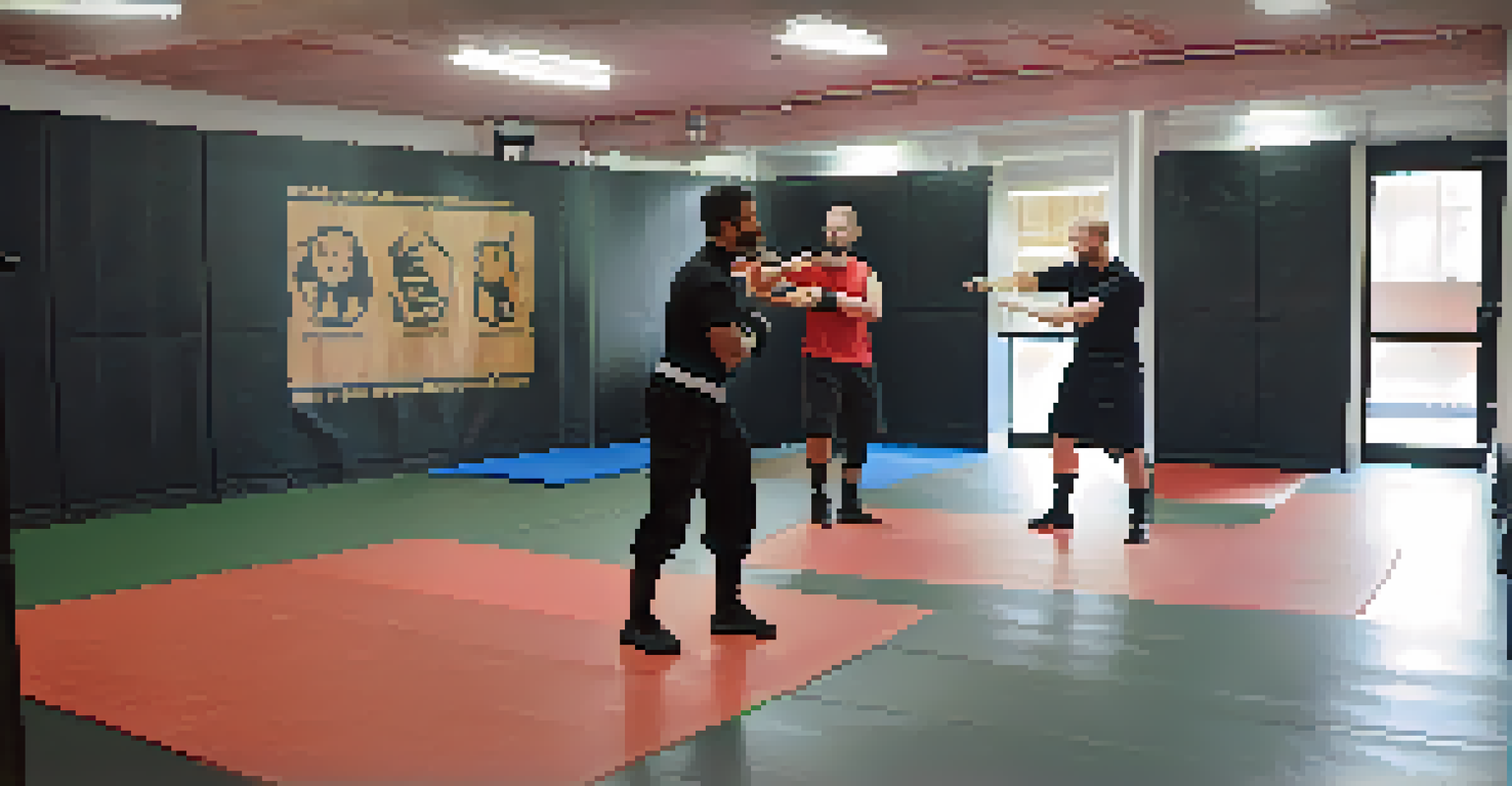The Use of Force Continuum: A Guide for Self Defense Training

What is the Use of Force Continuum in Self Defense?
The use of force continuum is a framework that outlines the appropriate levels of force that can be used in self-defense situations. It helps individuals gauge their response based on the threat they face, ensuring that the level of force is proportional to the danger. This concept is essential for anyone involved in self-defense training, as it provides a structured approach to handling confrontations.
The best way to predict the future is to create it.
Think of the continuum like a scale, where each level of force corresponds to the severity of the threat. For instance, if someone is merely yelling at you, a verbal response might suffice. However, if they are physically aggressive, escalating your response may be necessary to protect yourself.
Understanding this continuum not only empowers individuals to make informed decisions during conflicts but also emphasizes the importance of de-escalation tactics. Aiming to defuse a situation before it escalates can often prevent the need for force altogether.
The Levels of the Use of Force Continuum Explained
The use of force continuum typically consists of several levels, ranging from mere presence to lethal force. The first level is simply your presence, which can often deter potential aggressors. As you move up the continuum, you encounter levels such as verbal commands, physical restraint, and ultimately, lethal force.

For example, a police officer might start with their presence to control a situation. If that doesn't work, they may issue verbal commands. If the subject still resists, the officer may have to use physical restraint, demonstrating how the levels escalate based on the subject's actions.
Understanding Force Levels
The use of force continuum outlines appropriate responses based on the severity of the threat, ranging from mere presence to lethal force.
It's crucial to understand that the goal is to match your response to the situation at hand. This not only protects you but also minimizes the potential for unnecessary harm to others involved.
Importance of Training in the Use of Force Continuum
Training in the use of force continuum is vital for anyone serious about self-defense. It equips individuals with the knowledge and skills needed to appropriately respond to various threats. Regular training helps reinforce the principles of the continuum, making it easier to recall in high-pressure situations.
In the midst of chaos, there is also opportunity.
Imagine a martial artist practicing their techniques repeatedly; it’s this repetition that allows them to react instinctively when faced with a real threat. Similarly, understanding the continuum through training ensures that individuals can assess situations quickly and effectively.
Additionally, training fosters confidence. Knowing you have the skills and understanding of the continuum allows you to approach potentially dangerous situations with a clearer mind, making it easier to de-escalate conflicts.
De-escalation Techniques Within the Continuum
De-escalation is a critical aspect of the use of force continuum. It involves using verbal and non-verbal communication to defuse a potentially violent situation before it escalates. This might include calming your tone, maintaining a non-threatening posture, or even just giving the other person space.
For example, when faced with an aggressive individual, instead of responding with hostility, calmly stating your intentions can sometimes diffuse the tension. This approach aligns with the philosophy that the best defense is often to avoid conflict altogether.
Importance of De-escalation
De-escalation techniques are essential for defusing potentially violent situations, promoting conflict resolution without physical confrontation.
Training that emphasizes de-escalation techniques not only prepares individuals to handle confrontations but also promotes a more peaceful resolution. It highlights that self-defense is not solely about physical prowess but also about mental agility.
Legal Implications of the Use of Force
Understanding the legal implications of the use of force is crucial for anyone involved in self-defense training. Laws surrounding self-defense vary by jurisdiction, but they typically emphasize the principle of proportionality. This means that your response must be appropriate to the threat you face.
For instance, using lethal force against someone who is merely verbally threatening you could result in serious legal consequences. Knowing the laws helps individuals navigate the fine line between self-defense and unlawful aggression.
Moreover, being informed about the legal aspects of self-defense provides a layer of protection. If you ever find yourself in a situation where you need to use force, having a solid understanding of the law can help you defend your actions in court.
Practical Applications of the Continuum in Self Defense
The use of force continuum has practical applications in various self-defense scenarios. For instance, during a mugging, the threat level can quickly escalate, requiring you to assess your options rapidly. Understanding the continuum allows you to decide if escape, negotiation, or physical defense is the best course of action.
Consider a situation where someone approaches you aggressively. Your first instinct might be to back away or engage verbally. If they continue to close the distance, you can then escalate your response based on the perceived threat, all while keeping the principles of the continuum in mind.
Legal Considerations in Self-Defense
Awareness of the legal implications surrounding self-defense ensures that individuals respond proportionately to threats, reducing the risk of legal repercussions.
This practical knowledge empowers individuals to act decisively and appropriately, potentially saving lives while reducing the risk of legal repercussions.
Conclusion: Embracing the Use of Force Continuum
Embracing the use of force continuum is essential for anyone interested in self-defense training. It provides a clear roadmap for responding to threats, emphasizing the importance of proportionality and de-escalation. By understanding and practicing this continuum, individuals can enhance their self-defense skills and confidence.
Furthermore, the principles of the continuum encourage a thoughtful approach to conflict resolution. Instead of reacting impulsively, you learn to assess situations and choose the most appropriate response.

Ultimately, the use of force continuum not only prepares you physically but also mentally for unpredictable scenarios, ensuring that you're ready to protect yourself and others responsibly.